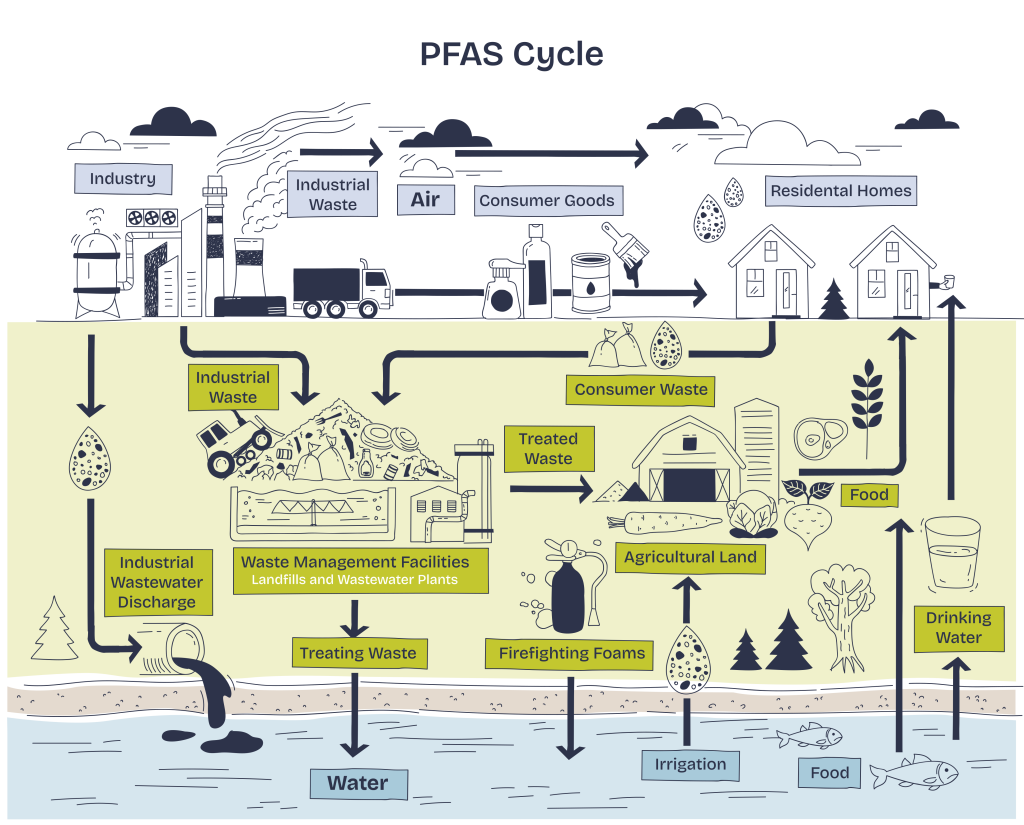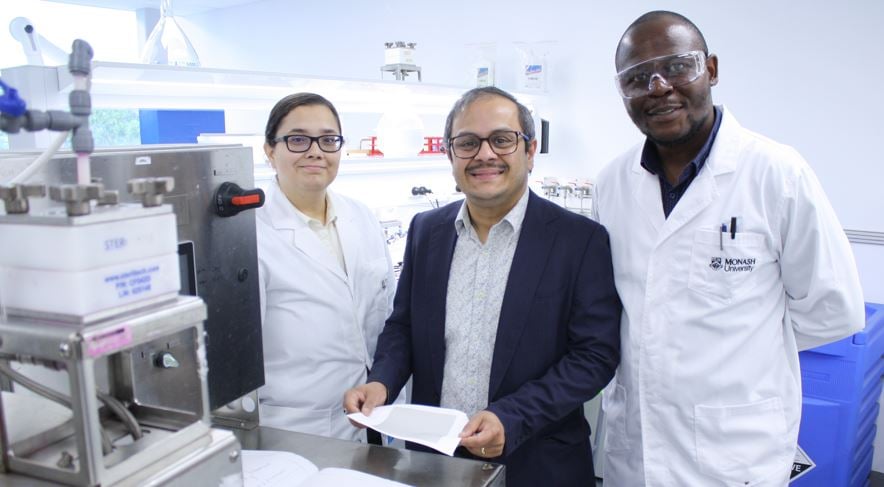Graphene Membrane Innovation Targets PFAS Removal from Water
9 April 2025
NematiQ, a wholly owned subsidiary of Clean TeQ Water, in collaboration with Monash University, has developed a next-generation Graphene Membrane that effectively removes both long and short chain per- and polyfluoroalkyl substances (PFAS), including PFOA and PFOS—marking a significant advancement in water purification technology.
PFAS are a group of man-made chemicals used in products like firefighting foams, non-stick cookware, waterproof textiles, and food packaging. Known for their persistence and resistance to breakdown, PFAS have become a growing concern due to potential health risks and widespread detection in soil, waterways, and drinking water.

Building on over a decade of research and development in Graphene Membrane technology, this latest breakthrough introduces a new approach to PFAS removal using advanced chemistry. Unlike NematiQ’s existing Graphene Membrane, which has a molecular weight cut-off (MWCO) of 800 Daltons and is suited for applications such as seawater reverse osmosis (RO) prefiltration, the removal of natural organic matter (NOM) from drinking water, wastewater recycling and industrial separations, the new PFAS-rejecting membrane uses innovative chemistry and creates an energetic barrier to prevent PFAS movement and achieve high PFAS rejection rates.
”This development marks an exciting step forward in water treatment technology,” says Peter Voigt, CEO of Clean TeQ Water and NematiQ.
“While early results indicate strong potential for PFAS removal, further testing and demonstration are required to validate performance in real-world applications before commercialisation.
The innovation presents a valuable opportunity for industries including municipal water treatment, manufacturing, defence, and environmental remediation. As regulatory bodies worldwide impose stricter PFAS limits in drinking water, NematiQ’s new membrane technology is expected to provide a scalable and sustainable solution for compliance and public health protection.

From left: Dr Sally El Meragawi, Professor Mainak Majumder, and Eubert Mahofa. Source: Monash University
Researchers at Monash University developed the technology by engineering a novel water filtration membrane that uses beta-cyclodextrin-modified graphene oxide to trap PFAS molecules. Its nanoscale channels are designed to selectively capture even short-chain PFAS compounds while allowing clean water to pass through—solving a key limitation of conventional filtration systems.
“PFAS are difficult to manage because they dissolve easily in water and can spread far from their original source, making contamination challenging to contain and remediate,” says study first author and Monash PhD candidate, Eubert Mahofa.
“Our approach solves this by filtering out and concentrating these harmful chemicals while still allowing water to flow through efficiently.”
Dr Sally El Meragawi, co-researcher on the project, says, “By combining advanced materials with smart chemistry, we’ve created a highly efficient way to tackle this global contamination issue.”
Monash University, Clean TeQ Water, and its graphene-focused subsidiary NematiQ have worked together over many years to advance and commercialise innovative membrane technology. They are committed to rigorous testing and demonstration trials to optimise and commercialise the technology.
”“We’re excited to continue our partnership with NematiQ to advance the commercialisation of this promising Graphene Membrane technology,” says Professor Mainak Majumder, Director of the Australian Research Council’s Research Hub for Advanced Manufacturing with 2D Materials (AM2D) which supported this work.
“Collaborations like this are key to translating research into real-world impact.”
The next steps involve pilot studies and collaboration with industry partners to validate the membrane’s effectiveness across different water treatment scenarios.
Meanwhile, NematiQ remains focused on scaling up the production of its existing Graphene Membrane, actively seeking collaboration with leading membrane manufacturers to expand capacity and enhance manufacturing efficiency. These efforts aim to accelerate commercial adoption of the technology in various water treatment applications while advancing the next generation of Graphene Membranes.

For more information on NematiQ’s Graphene Membrane technology and ongoing development efforts, visit www.nematiq.com or contact us.
Get in touch
Interested in Graphene Membranes for your project?